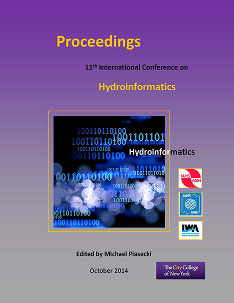Document Type
Presentation
Publication Date
8-1-2014
Abstract
Improving water quality is a global concern, with agricultural practices being the major contributors to reduced water quality. The reuse of nutrient-rich drainage water can be a valuable strategy to maximise water resources and gain economic-environmental benefits. Transmitting event information across a catchment, as the event occurs upstream, allows prediction of the outflow dynamics of the expected discharges downstream. Here, we propose a framework architecture which utilises increasingly common local farm-scale networks and other water-quality monitoring networks across a catchment, adding provision for collaborative information sharing. The key part is that individual networks learn their environment, predicting the impact of events elsewhere in the catchment on their own zone of influence. The predicted events can then be classified to influence management practice. Resource constraints on the distributed network nodes (eg power consumption, battery life) require a predictive model executing a simplified form of the underlying physical model. Data-driven machine-learning techniques are becoming popular in hydrological modelling. Therefore, by using the information sharing framework, statistics gleaned from the shared parameters of the event and the observed data in response to that event, can lead to the development of a low-dimension learning model, thus allowing the generation of hydrograph and pollutograph dynamics. To develop the proposed framework, a Matlab-based modelling environment is developed. These models use a low-dimensional feature set, utilising real-time field values for accurate discharge prediction. Learning algorithms for different feature sets and training data are tested. Evaluation of the predictive models for discharge dynamics, using M5 decision trees, demonstrates accuracy of 85-94% compared with traditional NRCS curve number models. The discharge volume model was tested to perform well (94% accuracy) even for a small training set of 65 samples; however the discharge travel and response time models require a minimum of 300 training samples to show reasonable performance.



Comments
Session R06, Deployment of HydroMet Sensor Networks